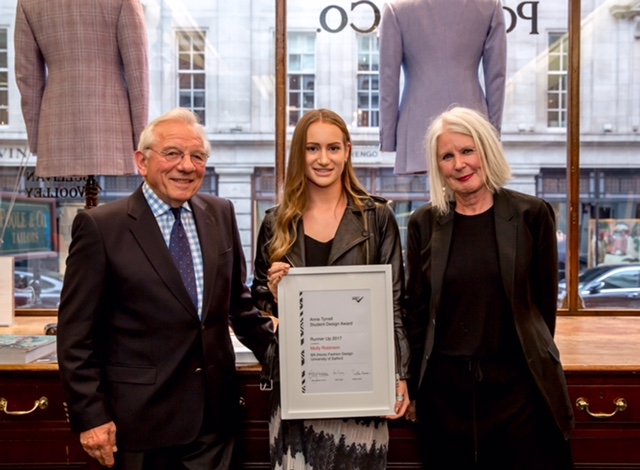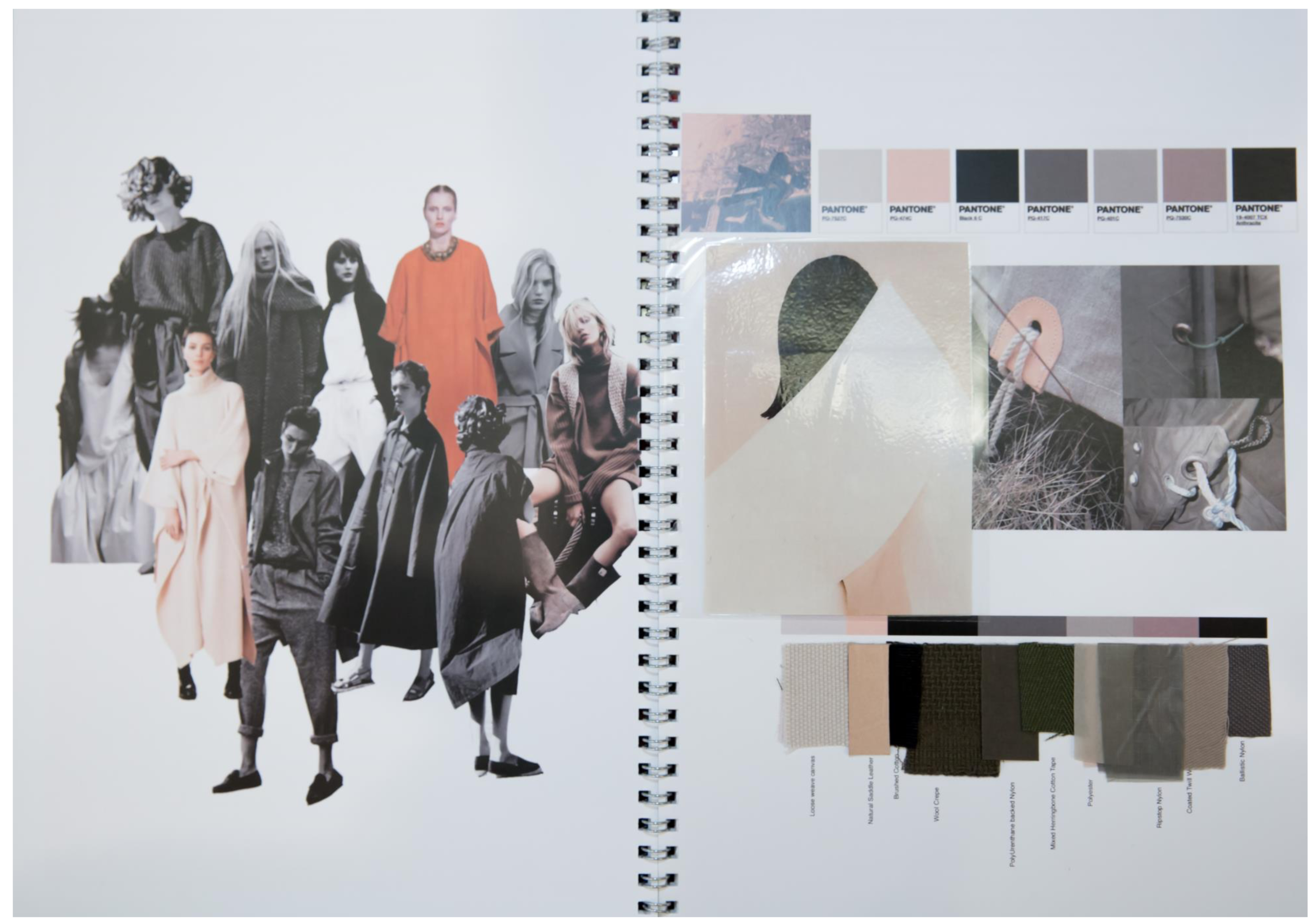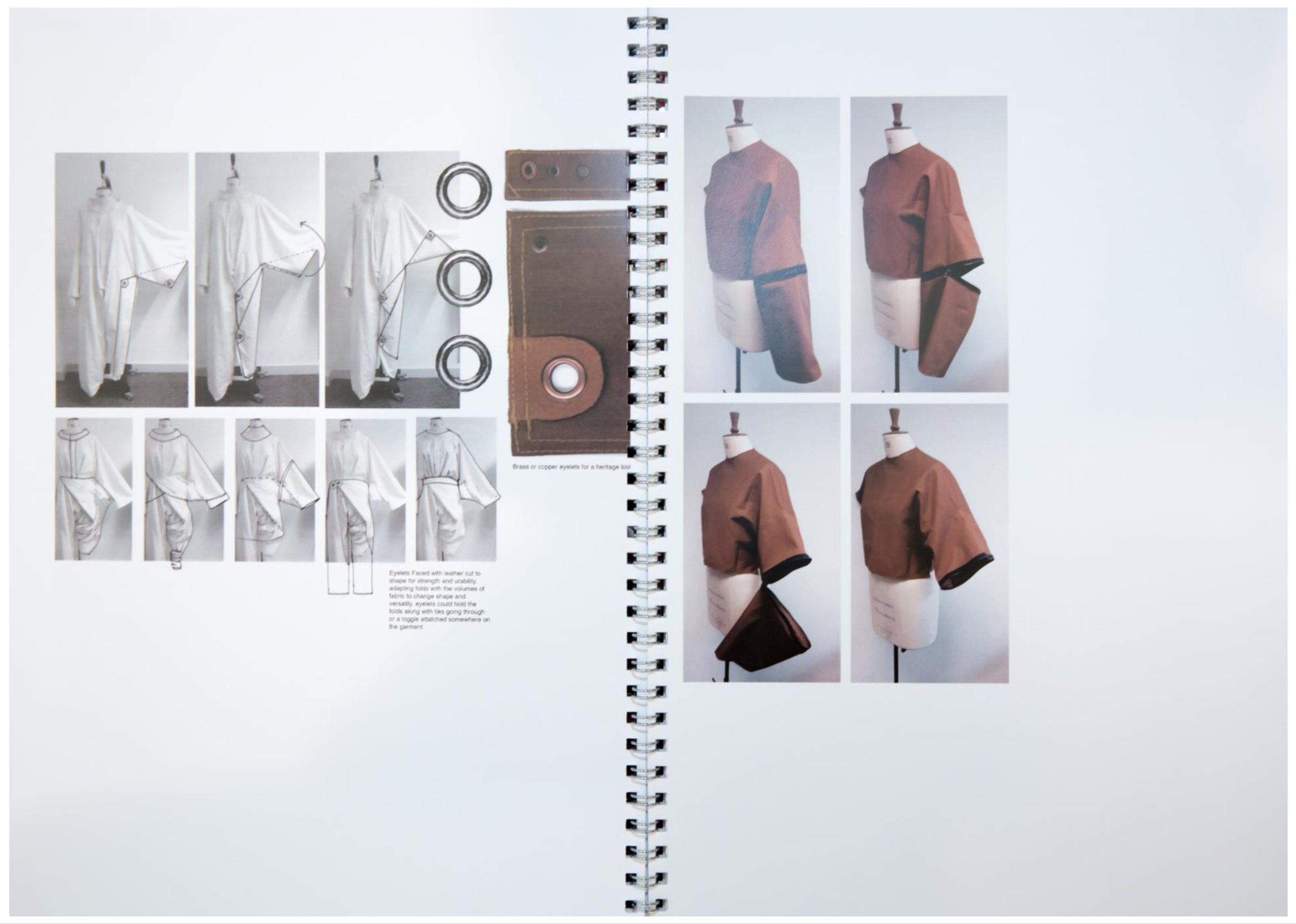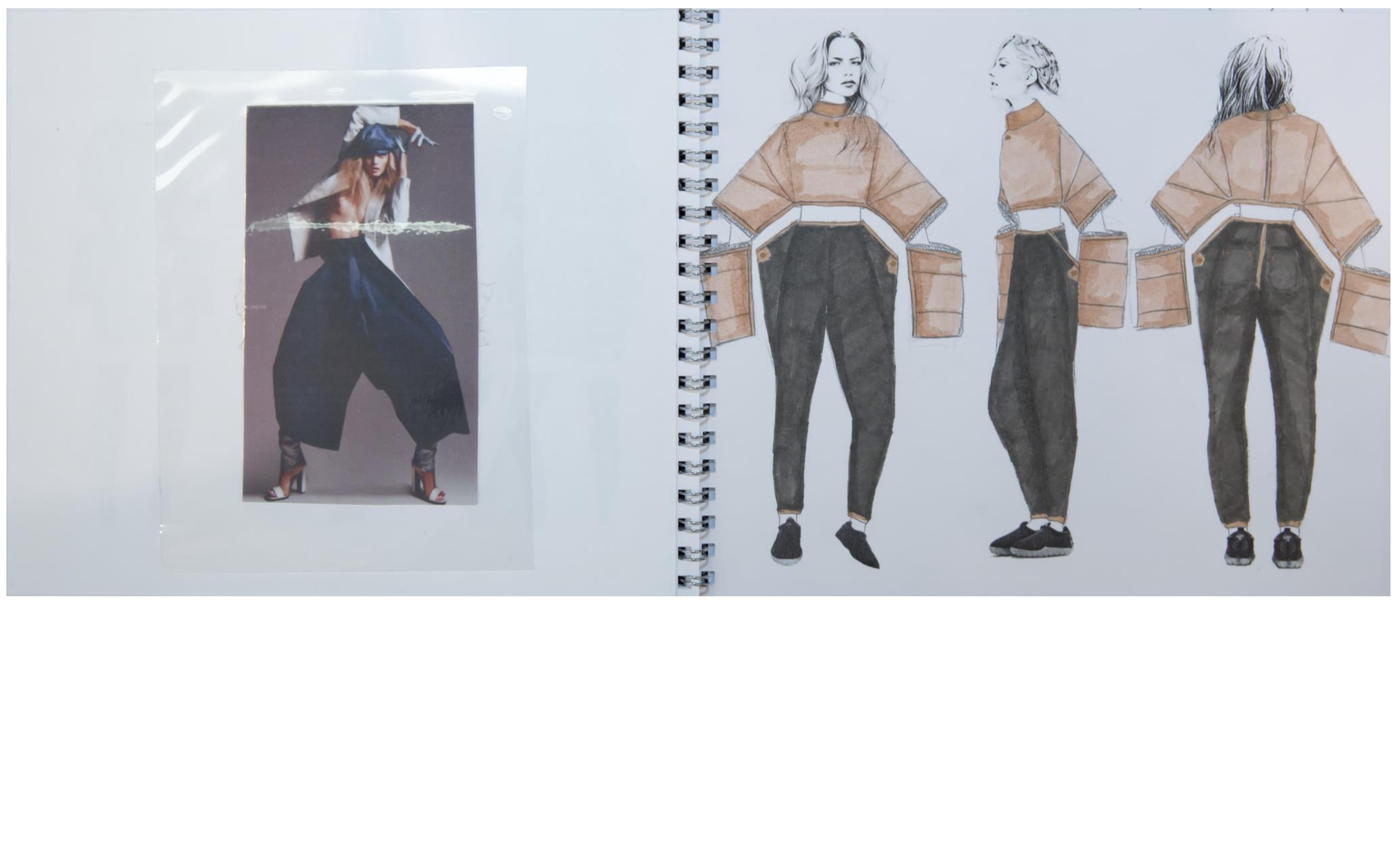Source: XXYMagazine
"Toni Martin started off the graduate collective show for the University of Salford with romantic yet contemporary themes. However, what attracted your attention immediately were the circular wooden structures looped around the model’s waist first, then the head and torso. This was Martin’s way of showing the restriction in clothing for the 19th-century female body and how in a large swing, liberation for womenswear meant the ability to show skin freely. The two contrasts were subtly achieved by using ethereal lace hence being able to see what is underneath, whilst a shadow of a rigid silhouette limited one’s walking. But I’m sure Martin was implying the slow steps models were taking were a reflection of where our 21st-century feminism is going for most.
Romanticism was played differently in what appeared to look like a fairytale dream in Emma Lewin’s “The Static Window”. Flowers, moss and other treats from Mother Nature were placed on faces whilst peasant sleeves bloomed and pleats took over. Rouging became popular amongst the Salford graduate show as Kiran Fathima Ayub and Rebecca Lawton both used this technique. I do not want to use the word “modest” for Ayub’s collection, not because it was a rarity shown explicitly in any of the shows, but because I do not want to use a word which is connected to being ‘old fashioned’ for some, to come to mind. It was actually progressive, as the Salford graduate show hence projected how an array of choice could be given for women to wear. I also noted how the centre of Ayub’s collection was not the bells and whistles accompanying the ready-to-wear but the materials itself. The term ‘luxury’ was what truly came to fruition.
By taking in Lawton’s collection and how the garments appeared to look as if they would fall apart – in the best way – if not pulled together, one may coyly ask how long a piece of string is, but that would be the same as being given the task of measuring the variety of the Salford graduates. As that is the key word to sum up the collective. Whilst we saw the same skills being utilised in different ways, displayed were different seasons, genders, ages, but mostly ideas.
An example of this is Stacey Wright’s “Paradise Displayed”, a spring/summer collection focusing on fruit, watermelons in particular. However, if this was not your cup of tea (not sure why it wouldn’t be), Emily Clementson’s “Unplugged Retreat” offered monochromatic and, of course, transparent striped cover ups. But, if you’re thinking pink, Laura Carrier’s aptly named “Pink Motel” collection seethed of the colour in all hues. Naturally, flamingos made a great presence whether they were tied to plastic cut outs or printed on bathing suits. But if maybe you’re not in the mood to lounge in L.A, poolside, Adele Kaiser focus on white furs for your ski season could be better suited. Or Karin Human’s “The Road Less Travelled” in between tropics collection. Cocoon designs screamed of autumn and yet there was the juxtaposition of being able to see through the clothes, which left that feeling when you want to prolong summer but let’s face it, a jacket is needed. The most interesting element Human revealed was how ropes were used, a trend I believe will be the next to come.
However, if your sartorial choices do not include clear perspex heels and fur which moves as you walk (all hail Kaiser) and you prefer to walk through the streets of Texas as a lady in red, with the addition of metallic trousers, even a couple of horns for a hat or a robotic head, Revekka Georgiadou’s “Cowboys & Robots” collection would be perfect for you. It had it all. Remember when I said the Salford show was all about variety?
Well, it did not just halt there. Hannah Thompson’s “Bosozoku Boys” brought us to East Asia as the menswear designer contributed to the sportswear conversation and where it is headed next. With “P1MP-1NG” emblazed on a registration number plate-turned-necklace, infused with solid colours and fur clutches, Thompson truly had a say on what was to come next for this luxe. Carl Tam’s menswear, however, told stories between the layers of clothing whilst blurring what “agender” clothing meant, especially for menswear. Instead of the typical minimal but shapeless shirts, illustrative faces were printed on voluptuous trousers disguised as skirts and dresses.
Lauren Tozer continued the show with her “Modern Viking Girls”. Tozer’s girls bodied geometric shapes, fur cuffed trousers, but the best detail? High slits for loose pieces and the destination you wouldn’t have predicted they were going.
But let’s head back to the playful, those that do not inform of this on their Instagram feed but that is embedded in their ethos: the refusal of basic. Daphne Kyriakou’s “Bandicout” spoke to the child in me, as models became clouds and the feature piece was similar to Mickey Mouse or the Simpsons in the sense that it was neither human nor animal. Whereas, Sarah Glover’s entry should have had Moschino running or giving Glover a job. The graduate showcased beautiful tailoring in her Dior-esque, old Hollywood gowns, but bought it back to 2016 by making it appear as those that were walking down the runway were bundled in sweets wrappers. On the other hand, Sinead Blagbrough did something I had not seen across the first day of the graduate shows: childrenswear. With her girls gaining much praise by the audience in their tie dye ensembles and matching co-ords, she made her clothing to be modern wear for children and not children mimicking the womenswear of today. For the finalé, Sarah Curtis made the team turn to each other and ask “How?!” as her designs depicted how Curtis and gravity were everything and besties."
Written by Tahmina Begum,
CEO and Editor-in-Chief
Illustrations by Aase Hopstock for XXY Magazine


























